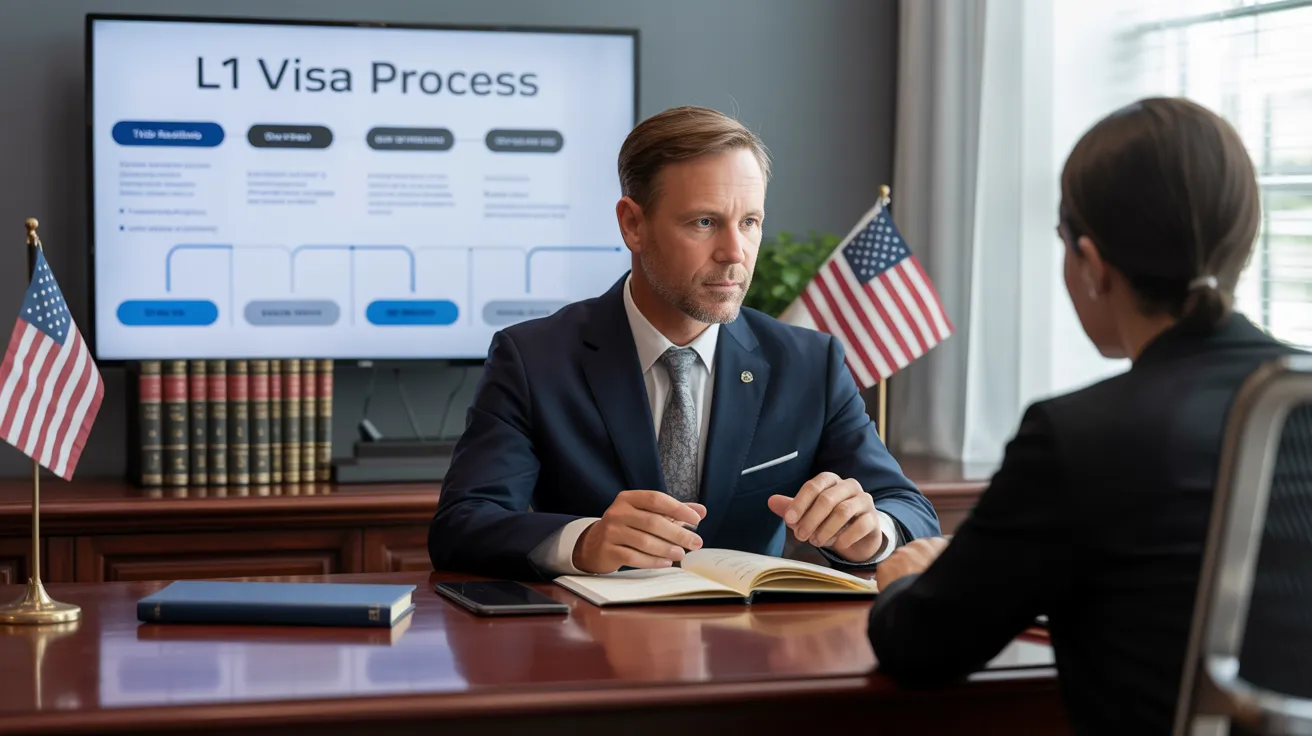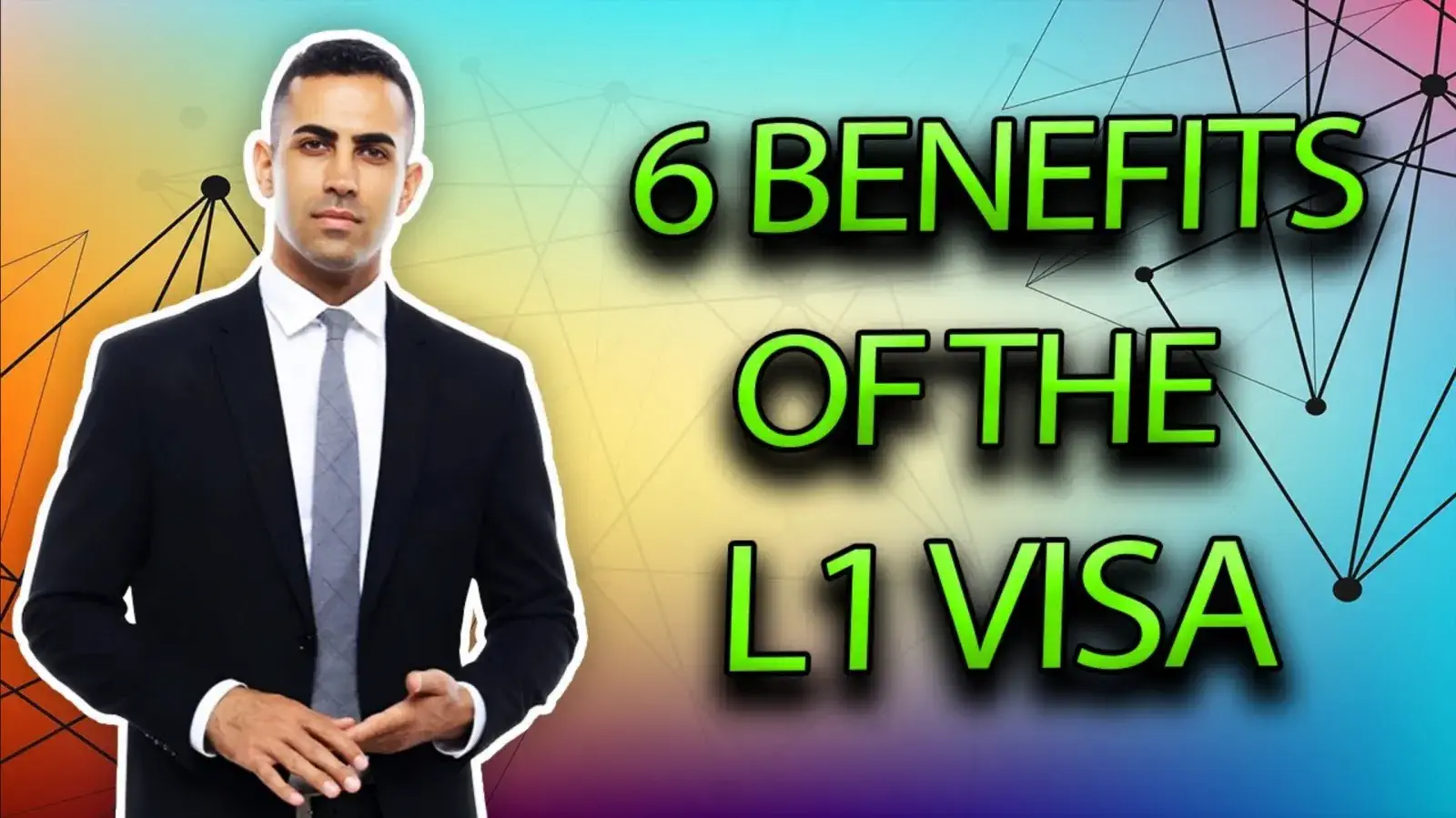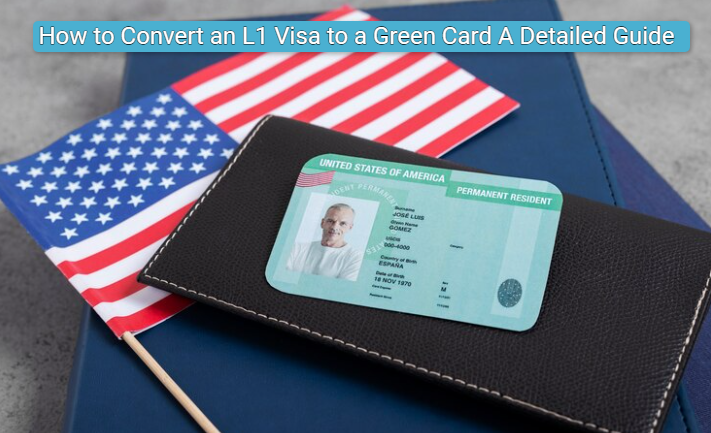Unlocking Opportunities: A Comprehensive Guide to the L1 Visa Process
The L1 visa process presents a critical path for international firms seeking to move vital staff members throughout boundaries. Recognizing the subtleties of qualification criteria, the differences in between L-1A and L-1B visas, and the details of the application process can considerably impact a candidate's success. Nevertheless, steering this complicated landscape is not without its difficulties, and mindful attention to paperwork and company sponsorship is necessary. As we check out the crucial parts of this process, the techniques for overcoming potential challenges will end up being obvious, disclosing exactly how notified preparation can open up a world of opportunities.
Comprehending the L1 Visa
Understanding the L1 visa requires recognizing its value as an important device for international business looking for to transfer proficient workers between international offices. This non-immigrant visa classification promotes the motion of executives, supervisors, and specialized knowledge employees to the United States, therefore allowing organizations to maintain operational continuity and harness international talent successfully. The L1 visa is separated right into 2 main classifications: L-1A for supervisors and executives, and L-1B for workers having specialized knowledge.The L1 visa offers a vital function in boosting a firm's affordable edge in the global industry. By permitting firms to move their key employees, organizations can ensure that critical tasks are handled by certified people who are already acquainted with the company's culture and functional processes. L1 Visa. This interior transfer device not only fosters expertise sharing yet additionally advertises development and partnership across borders.Moreover, the L1 visa is typically favored for its fairly simple application process contrasted to various other visa categories, as it enables dual intent, permitting holders to pursue permanent residency while on a short-term copyright. This attribute makes the L1 visa specifically appealing for both companies and workers, as it enhances the path for proficient professionals to establish long-term residency in the United States
Eligibility Requirements
Qualification for the L1 visa depends upon numerous crucial requirements that guarantee both the staff member and the employer fulfill specific credentials. This non-immigrant visa is developed for international business to move employees from consular services to U.S. counterparts.Firstly, the employer has to be a qualifying company, that includes a parent firm, branch, affiliate, or subsidiary of an U.S. company. The business should have been doing business for at the very least one year both in the united state and abroad. This guarantees that the firm has sufficient functional stability and a reputable presence.Secondly, the employee needs to hold a managerial, exec, or specialized expertise position. For L1A visas, the candidate needs to show managerial or executive qualifications, while L1B visas focus on specialized expertise related to the company's products, services, or processes. Furthermore, the employee should have helped the international entity for a minimum of one continuous year within the last 3 years prior to their application.Lastly, the employee's duty in the U.S. must line up with their previous setting, making certain that their abilities and competence are leveraged for the business's benefit.

Types of L1 Visas
The L1 visa group makes up two primary types created to facilitate the transfer of employees within international firms: the L1A visa for supervisors and executives, and the L1B visa for workers with specialized understanding. Each type offers unique purposes and has details qualification criteria.The L1A visa is tailored for individuals who hold managerial or executive positions within a business. This visa enables top-level staff members to transfer to an U.S. branch, subsidiary, or associate of the very same organization. Applicants for the L1A visa must demonstrate that they have been utilized in a managerial or executive capacity for a minimum of one constant year within the past 3 years prior to their application. In addition, this visa provides a much longer duration of remain, originally approved for 3 years, with the opportunity of extensions for approximately seven years.In contrast, the L1B visa is meant for professionals with specialized understanding associated to the company's items, services, or procedures. To certify, candidates have to show that their experience is crucial to the organization which they have worked for at least one continual year within the last 3 years in a function that needed this specialized understanding. The L1B visa is initially given for three years, with expansions offered for as much as five years.Both visa types are crucial for firms seeking to improve their international operations by leveraging proficient employees, consequently advertising innovation and efficiency within the united state market.
Application Process
Guiding via the L1 copyright procedure includes numerous essential actions that should be diligently followed to guarantee an effective result. The process starts with the U.S. employer, who need to first develop qualification by showing a qualifying partnership with the foreign entity and confirming that the worker meets the certain requirements for the L1 visa category being sought.Once eligibility is verified, the company launches the procedure by submitting Kind I-129, the Application for a Nonimmigrant Employee, with the United State Citizenship and Migration Provider (USCIS) This type should be accompanied by a thorough summary of the job duties to be carried out, the organizational structure of both the U.S. and international entities, and the employee's certifications. It's essential to verify that all details is exact and complete, as omissions or inaccuracies can lead to delays or denials.Upon authorization of the I-129 request, the following action entails the staff member getting the L1 visa at an U.S. embassy or consulate in their home country. This stage calls for the completion of Kind DS-160, the Online Nonimmigrant copyright, and setting up an interview. During the interview, the applicant needs to provide proof supporting their qualifications and the company's petition.After the visa is provided, the staff member can enter the United States to operate in the designated role. Overall, cautious prep work and adherence to each step of the application procedure are essential for an effective L1 visa outcome.
Needed Documents

Necessary Kinds Needed
Navigating the L1 Visa procedure calls for mindful focus to the important forms and paperwork essential for an effective application. The primary form required is the Kind I-129, Petition for a Nonimmigrant Employee, which must be completed and submitted by the U.S. employer (L1 Visa). This type details the details of the work deal and the qualifications of the employee looking for the L1 Visa.Alongside Kind I-129, the candidate will require to total Type I-539 if coming with relative are also making an application for visas. In addition, the company has to supply evidence of the certifying connection between the united state entity and the foreign entity, usually demanding the entry of corporate records such as short articles of incorporation or monetary statements.Moreover, it is important to include the L Classification Supplement to Kind I-129, which defines the sort of L Visa being requested-- either L-1A for supervisors and execs or L-1B for employees with specialized expertise. Finally, applicants must ensure that all forms are signed and dated suitably, as insufficient submissions can lead to delays or denials. Properly setting up these essential forms lays the structure for a smoother L1 copyright process
Supporting Evidence Requirements
Sustaining paperwork is vital for an effective L1 copyright, as it validates the insurance claims made in the request. Candidates have to supply a series of records to demonstrate qualification for the visa, which is categorized right into 2 primary kinds: evidence of the certifying relationship between the U.S. and international entities and evidence of the applicant's qualifications.To establish the partnership, applicants need to submit paperwork such as corporate business graphes, financial statements, and proof of ownership. These papers confirm that the foreign firm has a qualifying connection with the united state employer, whether as a parent company, subsidiary, branch, or affiliate.For the candidate's certifications, vital files consist of a detailed work letter from the international employer, outlining the applicant's job title, obligations, and period of employment. Furthermore, instructional credentials, such as levels and diplomas, must be offered to confirm the applicant's competence in the pertinent field.
Company Sponsorship Papers
Employer sponsorship files play an important duty in the L1 copyright procedure, as they verify the united state company's dedication to the candidate's employment in the USA. These files are essential for showing the company's qualification to sponsor the applicant for the L1 Visa.Key papers commonly called for consist of a detailed employment letter from the united state company, which lays out the job title, obligations, and the nature of the employment relationship. Furthermore, the company has to supply proof of the company's legitimacy, such as company licenses, tax returns, and organizational graphes, highlighting the partnership between the U.S. entity and the international company.Furthermore, evidence of the employee's certifying partnership with the foreign business is essential. This may include documents confirming the staff member's duty in the foreign entity, such as pay stubs, employment agreement, or efficiency examinations.
Usual Challenges
Maneuvering the L1 visa procedure presents a number of common obstacles that applicants should be aware of (L1 Visa). Trick concerns usually include strict documentation demands, prospective hold-ups in handling times, and the requirement for rigorous legal compliance. Comprehending these barriers can assist applicants much better prepare and mitigate risks throughout their copyright trip
Documents Needs
The L1 copyright procedure commonly presents considerable challenges associated with documents demands. Candidates need to offer substantial paperwork to establish qualification, which can result in complication and possible delays. Trick papers include evidence of a certifying partnership between the U.S. and foreign employer, evidence of the applicant's work background, and comprehensive details regarding the task role in the U.S.One common difficulty is collecting sufficient proof to show the nature of the certifying connection. Business frequently have a hard time to existing clear business charts or economic statements that highlight the connection in between the entities. On top of that, guaranteeing that letters of support from companies accurately mirror the applicant's task tasks and qualifications is important, as vague descriptions can cause denials.Another concern emerges from the demand for in-depth job descriptions that align with the L1 visa groups. Candidates must articulate not just their current duty yet also their managerial or specific knowledge duties plainly. This requires an extensive understanding of both the applicant's position and the regulatory language made use of in L1 applications.
Handling Time Delays
Experiencing delays in handling times is a common difficulty faced by L1 visa applicants, commonly leading to aggravation and unpredictability. Numerous variables add to these delays, consisting of high application volumes, enhanced scrutiny of applications, and management backlogs within the united state Citizenship and Migration Services (USCIS) Applicants may discover that handling times can differ considerably relying on the solution facility handling their application, as each center has its own work and performance levels. Additionally, the complexity of the candidate's case, such as the demand for substantial paperwork or information, can additionally extend wait times.In some circumstances, issues associated with the candidate's present migration status or previous visa history might also cause added delays, as USCIS may call for further testimonial or info. It is necessary for prospects to continue to be positive during this period, maintaining open communication with their employers and lawful agents to attend to any potential issues promptly.Understanding these handling time obstacles can help L1 visa applicants plan for possible delays and mitigate the effect on their shift and occupation strategies. Persistence and diligence are important virtues in navigating this intricate process.
Lawful Compliance Issues
Many L1 visa candidates encounter legal compliance concerns that can complicate their journey toward obtaining the visa. Recognizing and adhering to the certain guidelines set by the united state Citizenship and Immigration Provider (USCIS) is important. Common challenges include demonstrating the certifying connection between the foreign and U.S. companies, along with showing that the candidate has the L1 Visa law firm requisite customized knowledge or supervisory capacity.Additionally, candidates must supply complete paperwork detailing their job duties, company framework, and economic stability of the united state entity. Inadequate or unreliable documents can bring about hold-ups and even denials. Companies must additionally ensure that they adhere to labor laws, consisting of wage and working problem criteria, which can affect visa eligibility.Another usual issue includes keeping conformity with the regards to the visa once approved. Changes in employment standing, task obligations, or company structure can necessitate amendments to the visa, which if not addressed promptly can lead to lawful issues. Therefore, staying informed concerning conformity requirements and seeking legal guidance when required is vital to browse the intricacies of the L1 visa process efficiently.
Tips for Success
Success in the L1 copyright procedure usually depends upon meticulous preparation and attention to information. To improve your possibilities of authorization, begin by completely comprehending the qualification requirements for both the L1A and L1B visa classifications. Review whether your setting at the firm certifies as supervisory, exec, or specialized knowledge, as this classification significantly influences your application.Next, gather extensive documentation that confirms your claims. This includes business graphes, comprehensive task descriptions, and evidence of the business's functional structure. Clear and concise proof of the qualifying connection between the united state entity and the foreign entity is essential. Confirm that all papers are arranged realistically and provided in a specialist way, as this shows your commitment and seriousness about the application.Engage the services of a knowledgeable migration lawyer that focuses on L1 visas. Their knowledge can confirm vital, assisting you via facility guidelines and assuring that all documentation abides with present regulations. In addition, get ready for the interview by exercising response to common inquiries and being ready to review your function and payments to the firm in deepness.
Often Asked Concerns
Can Household Members Go Along With the L1 Visa Holder?
Yes, relative of L1 visa holders, consisting of partners and single children under 21, can come with the key visa owner. They may additionally get L2 visas, which permit them to stay in the USA.
How Lengthy Can I Remain On an L1 Visa?
The L1 visa enables preliminary keeps of approximately 3 years, with the opportunity of extension. L1A visa owners might remain for a maximum of 7 years, while L1B visa owners can continue to be for five years.
Can L1 Visa Holders Apply for an Environment-friendly Card?
Yes, L1 visa holders can request a permit. They might pursue irreversible residency via employment-based classifications, normally requiring sponsorship from their employer, given they satisfy the necessary certifications and documentation demands.
What Happens if My L1 copyright Is Denied?
If your L1 copyright is refuted, you may get a notice describing the factors for denial. You can seek to appeal the decision, reapply, or explore different visa choices based upon your circumstances.
Exist Any Travel Limitations With an L1 Visa?
An L1 visa generally enables international travel; nonetheless, re-entry to the united state rests upon maintaining valid condition. Vacationers ought to assure compliance with visa conditions to prevent complications upon return
Final thought
